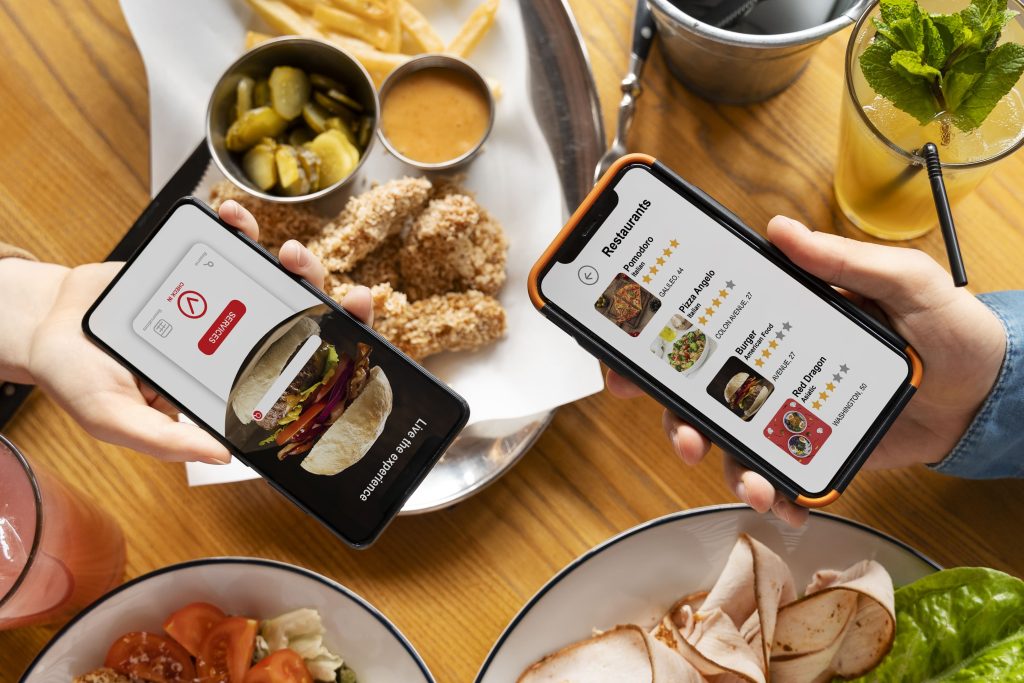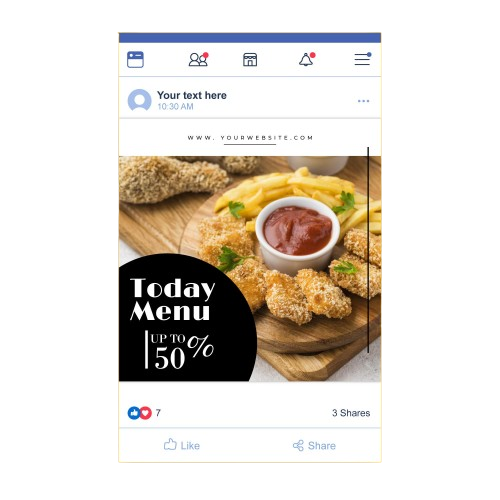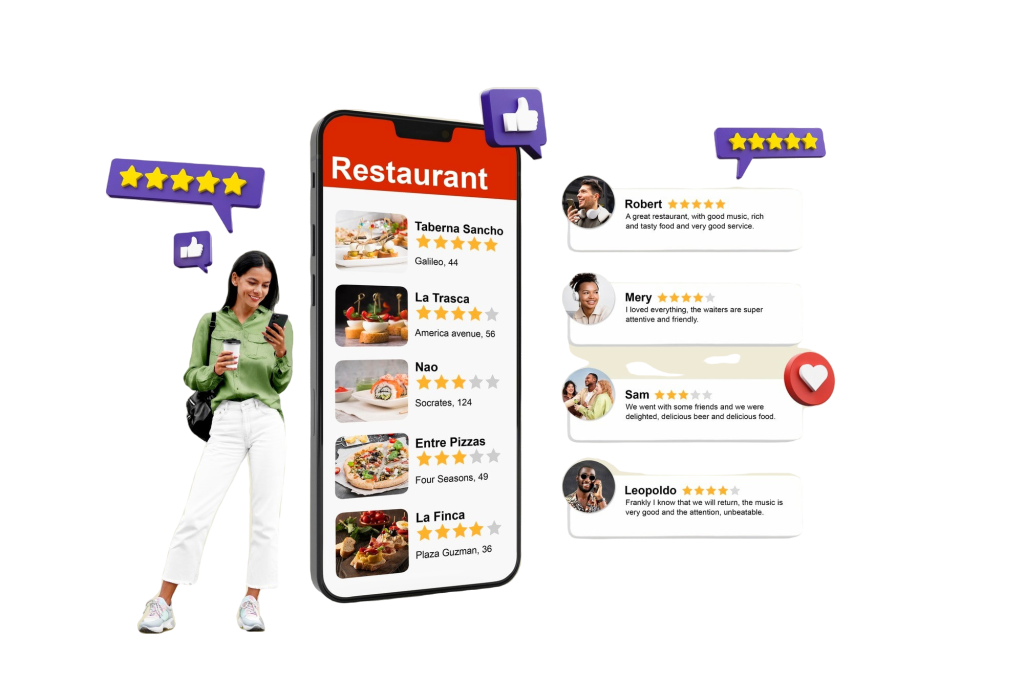
The restaurant business in the United States is one of the most competitive, with restaurants always competing for customers’ attention and loyalty. During this digital era, social media has emerged as a game-changing tool for restaurants in building brand presence, engaging with customers, and driving business growth. Social media management has become an integrating factor in restaurants’ success, with each one of these platforms offering different ways to connect with the audience: Instagram, Facebook, Twitter, TikTok, and even LinkedIn. This blog goes in-depth into the wide-ranging effect social media management has on US restaurants, from brand visibility to customer engagement and increased sales to reputation management, and more.
Enhancing Brand Visibility
At the same time, social media gives restaurants in the US a digital platform to showcase their individuality. Be it a small diner in New York City or a fusion restaurant in Los Angeles with dishes that are innovative, social media enables restaurants to express themselves digitally in visually interesting ways.
 For instance, Instagram being a visually oriented platform does wonders for restaurants in the US. Signature dishes, their images, or some amazing stories about the origin of the restaurant can make lovers of food take a note or two. Features like Reels and Stories allow showing limited-time offers or seasonal menus, which can again increase their visibility.
For instance, Instagram being a visually oriented platform does wonders for restaurants in the US. Signature dishes, their images, or some amazing stories about the origin of the restaurant can make lovers of food take a note or two. Features like Reels and Stories allow showing limited-time offers or seasonal menus, which can again increase their visibility.
It combines local SEO with listings like Google My Business to ensure that US restaurants appear when users search for places such as “best seafood restaurants in Miami” or “best vegan restaurants near me.” This ensures greater discoverability, bringing in a constant stream of customers to the restaurant.
Creating Meaningful Customer Engagement
Social media lets restaurants in the US communicate with customers at a level that is much deeper. It lets restaurants build a sense of community and loyalty through interactive posts, responding directly to comments, and user-generated content campaigns.
For example, many restaurants in the US use Instagram to engage their audience through polls, quizzes, and contests. By asking customers to post pictures of their dining experience with a specific hashtag, the restaurants can increase their visibility while generating organic engagement. For instance, a Chicago pizzeria could ask its customers to create topping combinations and then have the winning entry on their menu.
Sharing behind-the-scenes moments, like a chef preparing a special dish or staff celebrating a milestone, humanizes the brand and provides for stronger connections. In the US, restaurants that nurture engagement find this translates into repeat visits and long-term loyalty.
Driving Sales with Strategic Promotions and Ads
 Social media has revolutionized how US restaurants market their offerings and promotions. Through social media platforms such as Facebook and Instagram, restaurants can build targeted ads to ensure that promotions reach the right audience.
Social media has revolutionized how US restaurants market their offerings and promotions. Through social media platforms such as Facebook and Instagram, restaurants can build targeted ads to ensure that promotions reach the right audience.
For instance, a Southern-style barbecue restaurant can use Facebook Ads Manager to target users within its radius who show interest in things like smoked meats or BBQ festivals. Meanwhile, Instagram makes shoppable posts available wherein users can order food directly off of the platform for a seamless path from discovery to purchase.
Another trendy collaboration in the US food industry is restaurants with social influencers and food bloggers. This often results in an immediate increase in footfall, especially among the younger audience, who seems to trust peer recommendations way more than traditional advertisements. The promotions by season, such as discounts on holiday menus or happy hour deals, are further enhanced through social media platforms, driving online orders along with in-store traffic.
Managing Online Reputation and Customer Feedback
For restaurants in the US, it is very important to have a good reputation on social media. Online reviews, ratings, and comments greatly affect customer decisions. Restaurants with excellent social media management monitor and respond to all customers’ feedback to maintain a good reputation.
 Positive reviews and testimonials shared on platforms like Yelp or Google can be highlighted on a restaurant’s social media page. Conversely, addressing negative feedback with empathy and actionable solutions demonstrates professionalism and care. For example, a California-based seafood restaurant might respond to a negative review by offering a complimentary meal to rectify a customer’s experience.
Positive reviews and testimonials shared on platforms like Yelp or Google can be highlighted on a restaurant’s social media page. Conversely, addressing negative feedback with empathy and actionable solutions demonstrates professionalism and care. For example, a California-based seafood restaurant might respond to a negative review by offering a complimentary meal to rectify a customer’s experience.
Complaints, if left ignored or poorly handled on social media, would hurt the restaurant’s image and drive away potential patrons. Proactive and strategic feedback management will help restaurants in the US retain trust and loyalty while turning potential crises into opportunities.
Building Loyalty Through Exclusive Content
Social media is a channel for restaurants in the US to reward loyal customers and attract new ones with exclusive content. Restaurants can give out limited-time discounts, live events, or early access to reservations for special events.
For example, an upscale Texas steakhouse may have a special loyalty program that is announced through their social media, in which members can receive free appetizers or first priority into the venue. Giving information on special programs such as this one or just giving a taste of their new menu keeps interest fresh with the audience.
Gaining Insights with Analytics and Trends
One of the most significant benefits of social media management is its power to collect and analyze data. The metrics will be useful in showing engagement rates, click-through rates, and demographics of the audience to tune strategies for US restaurants.
For instance, when a seafood restaurant in Miami realizes that lobster dishes on their social media get much more traction compared to all other types of seafood they post, then they might focus more attention on posting specials of lobsters. Tracking trends from plant-based eating to what’s hot on TikTok keeps restaurants on trend, and may appeal to an entirely new clientele.
Analytics also give insights into ad campaign performance. With such knowledge, restaurants in the US will put their money where it best serves to ensure maximum ROI on marketing spending.
Conclusion
It is not a coincidence that restaurants in the United States consider social media management one of the key factors for success. Through increased visibility, customer engagement, driving sales, reputation management, and data analysis, restaurants operating in the US can quite easily have success in contemporary competitive markets. Social media management helps attract new customers to a restaurant while consolidating the existing relationships of current ones. In an industry where first impressions tell it all, mastering social media will let restaurants make a difference, stay ahead of the changing tides, and create impressive dining experiences online and offline.
